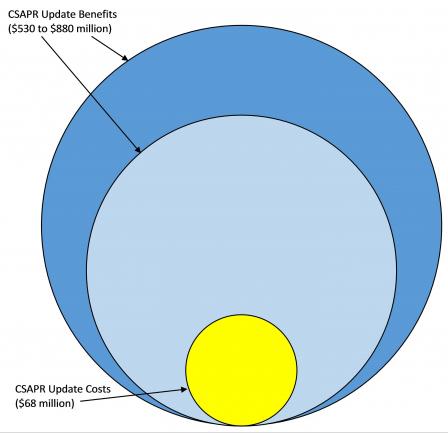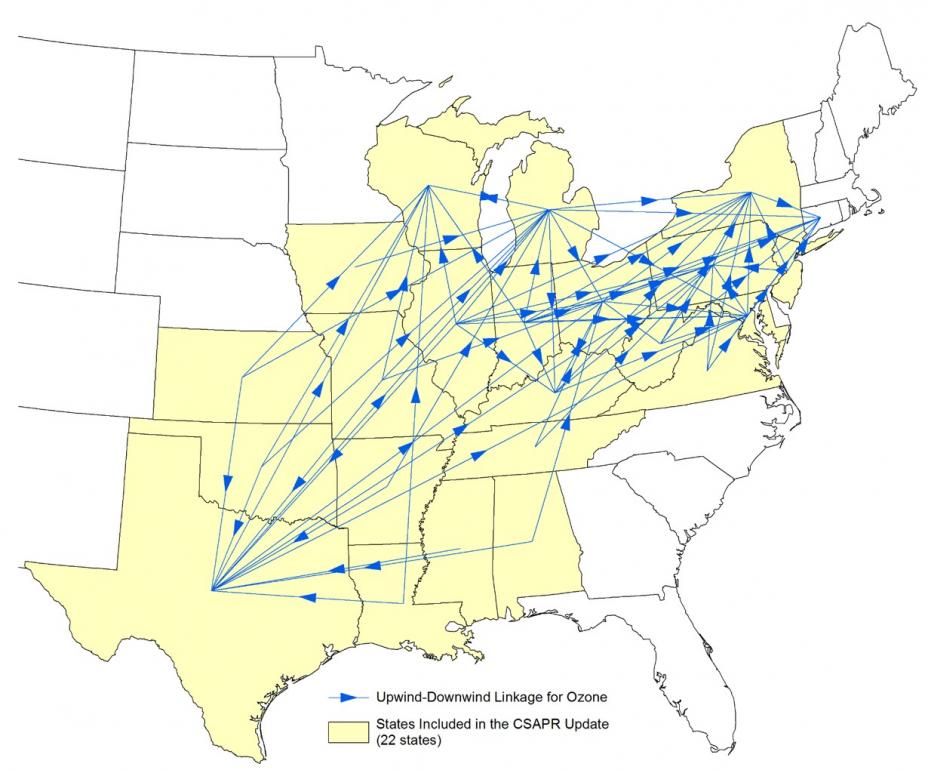Final Cross-State Air Pollution Rule Update - Benefits Information and Maps
 Starting in May 2017, the final Cross-State Air Pollution Rule Update will reduce summertime (May - September) nitrogen oxides (NOX) emissions from power plants in 22 states in the eastern U.S. The rule will reduce ozone pollution that crosses state lines and will help downwind areas meet and maintain the 2008 ozone standard.
Starting in May 2017, the final Cross-State Air Pollution Rule Update will reduce summertime (May - September) nitrogen oxides (NOX) emissions from power plants in 22 states in the eastern U.S. The rule will reduce ozone pollution that crosses state lines and will help downwind areas meet and maintain the 2008 ozone standard.
Five things to know about the final Cross-State Air Pollution Rule Update:
- Delivers benefits worth an estimated $530 million to $880 million per year, far outweighing the estimated costs of $68 million per year.
- Provides states and sources with an achievable and cost-effective path to quickly reduce emissions.
- Uses the existing, familiar CSAPR 4-step framework.
- Reflects stakeholder input and responds to the July 2015 decision of the U.S. Court of Appeals for the D.C. Circuit.
- Helps meet the Agency’s obligation under the Clean Air Act to address the interstate transport of ozone air pollution.
Interconnected Nature of Interstate Ozone Pollution
This map shows the CSAPR Update "linkages" between pollution from upwind states and areas in downwind states that have problems meeting or maintaining the 2008 ozone NAAQS.

Interactive Map of the Final CSAPR Update
This map shows the affected states and electric generating units in the final Cross-State Air Pollution Rule Update. Click on a power plant for information about that plant, including name, location, and 2015 emissions. Click on the map to zoom to a specific location or type a location in the search bar. Zoom back out for full U.S. view.
